Whether your dog recoils at the touch or dodges your attempts for a cheerful head rub, this reaction is not to be overlooked. It goes beyond mere inconvenience—it chips away at the special bond you share with your dog.
You can use gentle retraining to restore your dog’s sense of safety and trust around human hands.
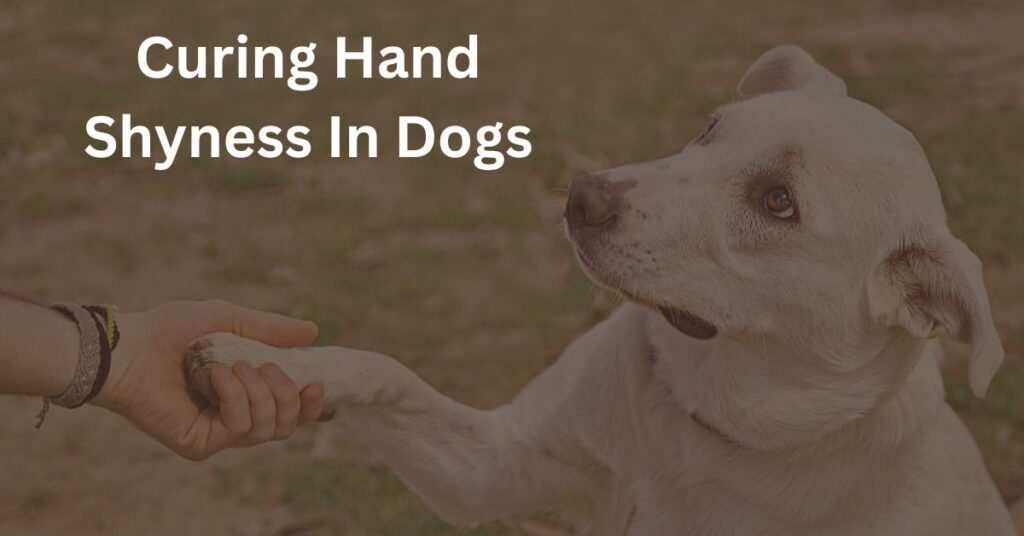
Table of Contents
Understanding Hand Shyness in Dogs
Dogs may develop hand shyness for various reasons. One common cause is a history of negative experiences, such as being grabbed harshly or hit, which can lead to a deep-rooted fear of hands.
This behavioral conditioning links human hands with discomfort or pain, causing dogs to become fearful and avoidant whenever a hand comes near.
Some breeds have an innate sensitivity to movement and can be naturally hand-shy—take Border Collies, for example. These dogs are incredibly attuned to their surroundings and may perceive a swift hand motion as a threat, triggering an anxious or defensive reaction.
Understanding these causes helps us see the world from your dog’s perspective and emphasizes the need for compassionate retraining strategies that build trust rather than reinforce fear.
Importance of stopping any negative experiences
Understanding the triggers that lead to hand shyness lays the foundation for our next crucial step: stopping any negative experiences immediately. This is a vital part of the process because it sets the stage for successful retraining and rehabilitation.
Negative interactions, such as hitting or grabbing, can leave deep-seated fears in dogs, and these actions must stop if you’re to build trust again. This phase is critical; without stopping harmful behavior immediately, all attempts at training will be undermined by lingering anxiety or mistrust in your dog.
An environment free from fear is essential for their psychological well-being and paves the way toward positive reinforcement techniques that work. If you observe aggression or no improvement despite your best efforts, seeking professional help becomes necessary for recovery.
A behavioral counselor or trainer with expertise in canine rehabilitation can offer tailored strategies to overcome past trauma and encourage gentle handling in the future.
Retraining Techniques for Hand Shy Dogs
Utilize cherished treats as positive reinforcement and only use them when working on hand shyness retraining – making them high-value treats for your dog. The higher the value the treat, the more your dog will want to work for it.
The retraining will be done in small, slow steps. This retraining is not a race and will take as long as it takes (some dogs will relax within a couple of weeks, and some may take months) – you will focus on the process rather than the end goal.
Use of food as a reward for your dog
You know how much your dog loves their treats, so use their favorite snacks to encourage trust and cooperation. Imagine your dog’s delight when a training session becomes synonymous with the delicious taste of chicken strips or cheese bits they don’t get at any other time.
Keep these special treats reserved for moments when courage blooms; each successful interaction with your hand close and your dog remaining calm is immediately followed by the offering of this prized snack.
Handing out these high-value rewards sends a clear message: brave/calm behavior equals scrumptious benefits. Dogs are smart, and they quickly make positive associations. With consistent practice and plenty of encouragement, they begin to expect something wonderful every time our hand comes gently over their head.
And it’s not just about the food—our warm praise makes them feel secure, building up confidence and trust lasting far beyond training sessions.
Slowly raising hand over the dog’s head
To retrain a hand-shy dog, use the following techniques:
- Hold a small piece of high-value treat in front of the dog’s nose, and while your dog sniffs and/or licks the treat, slowly raise your other hand over their head.
- Give them the treat if they accept it without worry. Use lots of calm verbal praise, too.
- Start with just raising the hand, and repeat this many times until your dog remains calm each time.
- When your dog is 100% calm with you raising your hand above its head, gradually start sweeping it downward past the dog’s head, only moving closer when the dog is relaxed and enjoying the treats.
- If the dog is anxious when standing near them with your arm up, try kneeling or sitting on the floor first.
- Keep talking to them happily throughout the training to create a positive association with your hand movements.
Gradually increasing speed and movement
We start by raising the hand, then gradually sweep it downward past the dog’s head, only moving closer when the dog is relaxed and enjoying the treats. Repeat the process, slowly increasing the speed as you raise your hand. Do not make contact with your dog’s head yet. Allow your dog to get comfortable with moving your arm/hand first.
Move to the second level by not holding the treat to the dog’s nose and slowly raising your hand over your head while stepping toward them. Back up a step or two every time the dog takes the treat to give them confidence and release any stress. Gradually increase the speed of the hand raising and step toward the dog over many sessions.
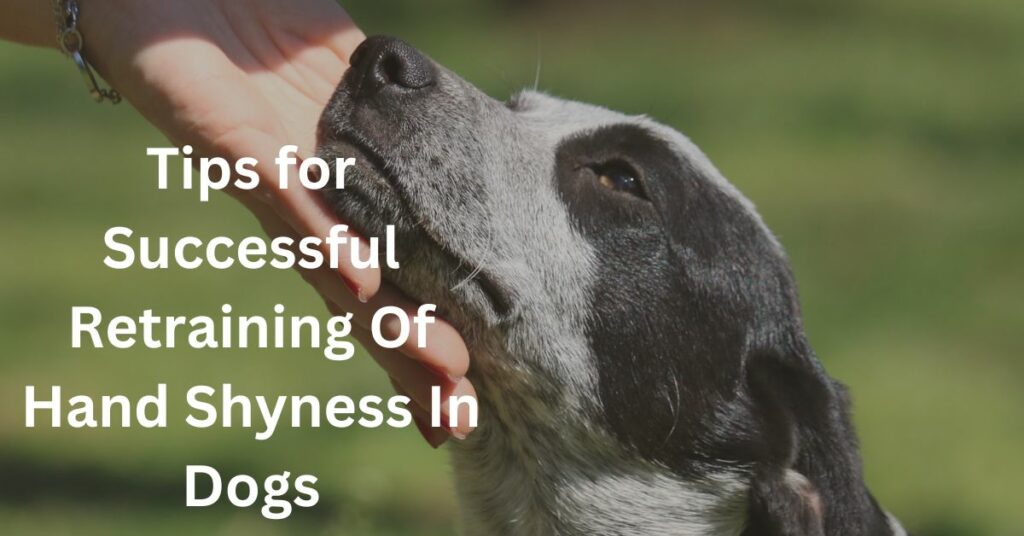
Tips for Successful Retraining of Hand Shyness In Dogs
Starting at the dog’s comfort level
Always start at the dog’s comfort level to ensure the success of retraining a hand-shy dog. This means being mindful of their body language and reactions when introducing new training methods or techniques. Start where your dog is at, not where you feel your dog should be in terms of readiness for training.
By paying attention to their cues and taking things slow, we can build trust and create a positive experience for the dog throughout the retraining process. It’s essential to use gentle handling, positive reinforcement, and calming signals while maintaining patience and consistency in our approach.
Additionally, incorporating rewarding-based training using cherished food can help ease the dog’s anxiety and make them more receptive to retraining.
Using positive reinforcement and praise
Using positive reinforcement and praise to help retrain dogs successfully involves rewarding desired behavior with treats and affection, reinforcing their confidence through affirmation and encouragement. Focus on offering encouragement and praise for small victories during retraining sessions.
Incorporating motivational training techniques can boost the dog’s self-assurance, leading to positive behavior modification and a more confident demeanor.
Being patient and playful throughout the process
Keep the training sessions enjoyable by staying patient and incorporating playfulness. Use a fun approach, ensuring that the atmosphere remains relaxed and calm. By doing so, you create an environment where your dog feels encouraged to engage in the training activities with you.
This consistent positive reinforcement fosters a sense of trust between you and your dog while making the experience enjoyable for both of you.
Seeking Professional Help if Needed
If your dog shows no progress in overcoming hand shyness or displays aggression, it may be time to seek professional help from a certified dog behaviorist. Choose a reputable behaviorist who uses non-aversive methods. Aversive methods can add more fear to your already fearful dog.
Canine behavior can be complex, and some dogs may require specialized assistance to address their hand shyness effectively.
Understanding that each dog responds differently to retraining is crucial when it comes to canine aggression. Considering each animal’s individuality, professional help can offer specialized behavior modification techniques based on data-driven insights and industry practices.
Final Word on Retraining Your Dog for Hand Shyness
Overcoming hand shyness in dogs is achievable through patient and playful retraining techniques. Using high-value treats as a reward and starting at the dog’s comfort level are practical strategies for building trust and desensitizing them to touch.
Implementing these methods can significantly improve a dog’s behavior and well-being, ensuring a positive impact on their overall quality of life. For further guidance, professional help may be sought if needed, but with persistence and positivity, many dogs can make substantial progress quickly.
With dedication and commitment, you have the power to positively impact your dog’s life by fostering a trusting and confident relationship.

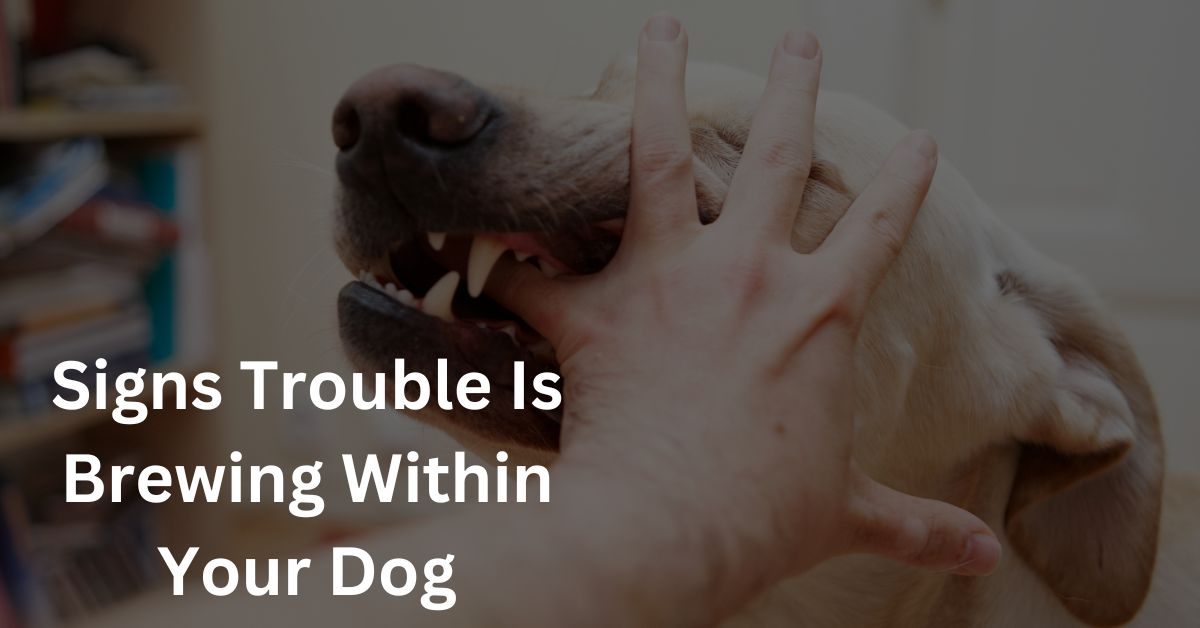
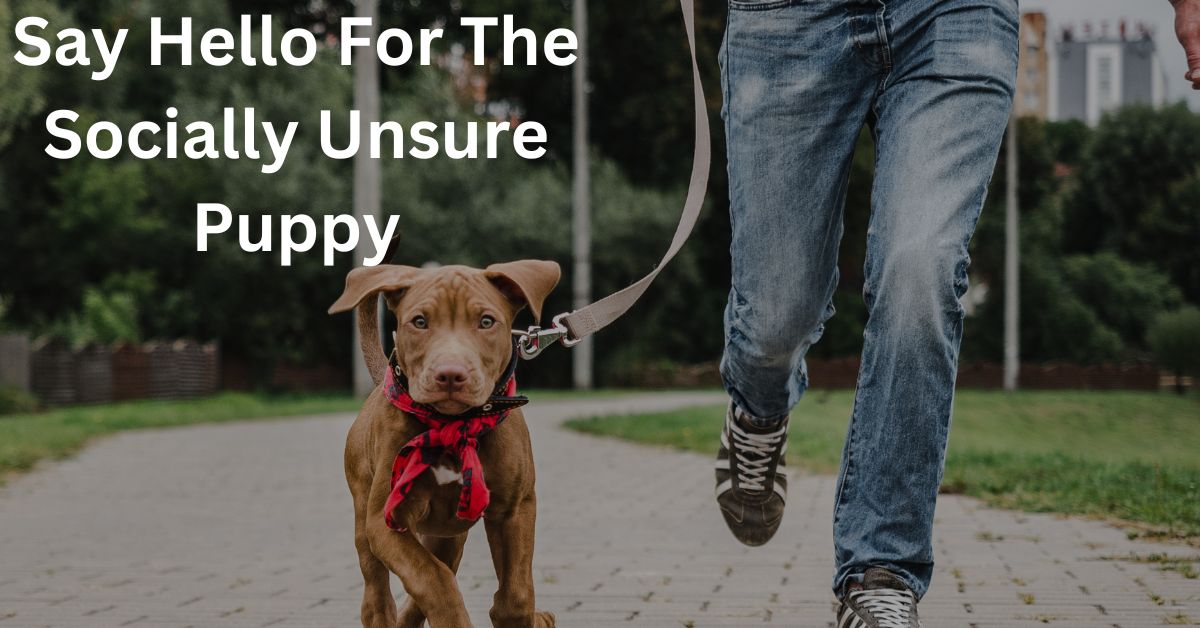
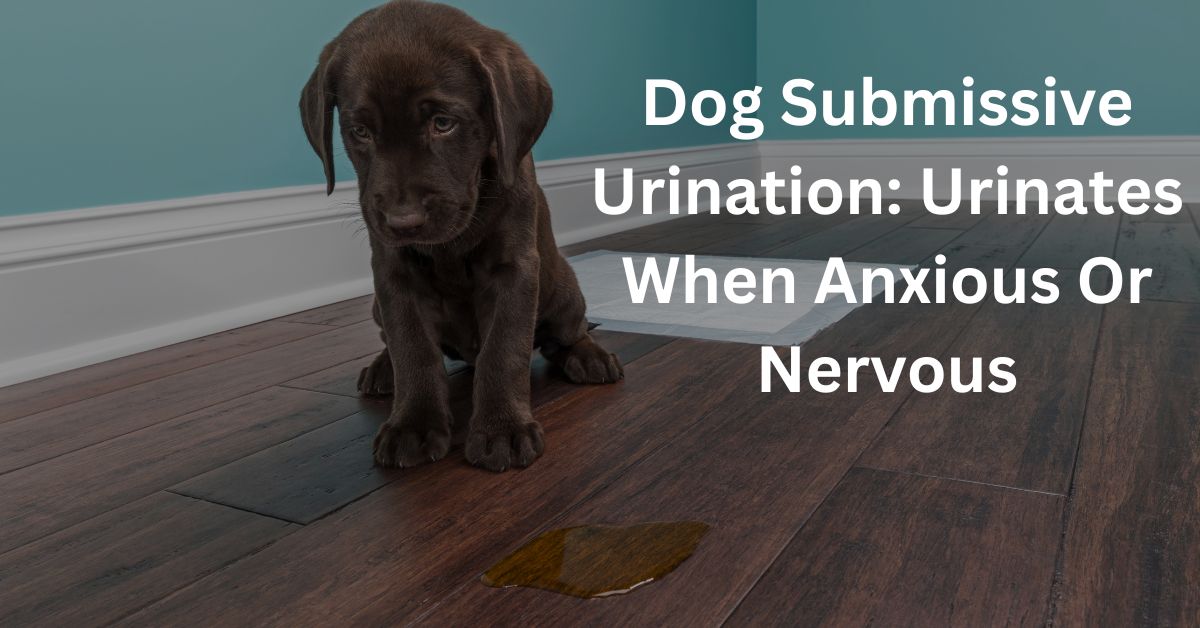
Leave a Reply